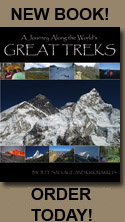 |
 |
RAW vs. JPG
When taking digital photographs many cameras allow you to select either a JPG or RAW image. A RAW image is a relatively unprocessed file written in a language specific to your camera. In contrast a JPG image is processed much more with less data stored within it. When processing the image to prepare a JPG file decisions must be made related to color temperature, color saturation and compression level.
It would seem that if your camera offers both options that serious photographers would always select RAW. Indeed there are breeds of photographers that preach to only shoot RAW, looking down at anyone who dares click off a JPG. However, I do not fall into this camp. Most of the time I shoot in a mode that makes a RAW and JPG file simultaneously. My camera actually can record each to a separate card. This gives me the ability to preview the JPGs quickly and go to the RAW file when its necessary. Still there are times when I don't follow this approach. Mostly it's when I shoot sports or highly interactive wildlife scenes. The problems with shooting RAW in these situations is that the camera buffer fills up quickly and then I might miss a shot waiting for the buffer to empty. Obviously this decision must be made on a case by case basis. One last consideration is storage space. I tend to keep every image I shoot, unless it's a total disaster. This leads to massive storage needs. Currently, I have two terabytes of data. I keep to extra complete backups. So the cost for my RAW files is six terabytes of storage. This shouldn't scare you, storage and memory cards are relatively cheap.
I have to say even though I shoot raw, I don't see a difference in every photograph I take. Some photographs look just fine as JPGs from the directly out of the camera. However, When there is a wide range between the blackest black and the whitest white, the extra pixel data in a RAW file comes in handy adjusting the photograph before producing a jpg or tiff file to print or display on the Internet.
